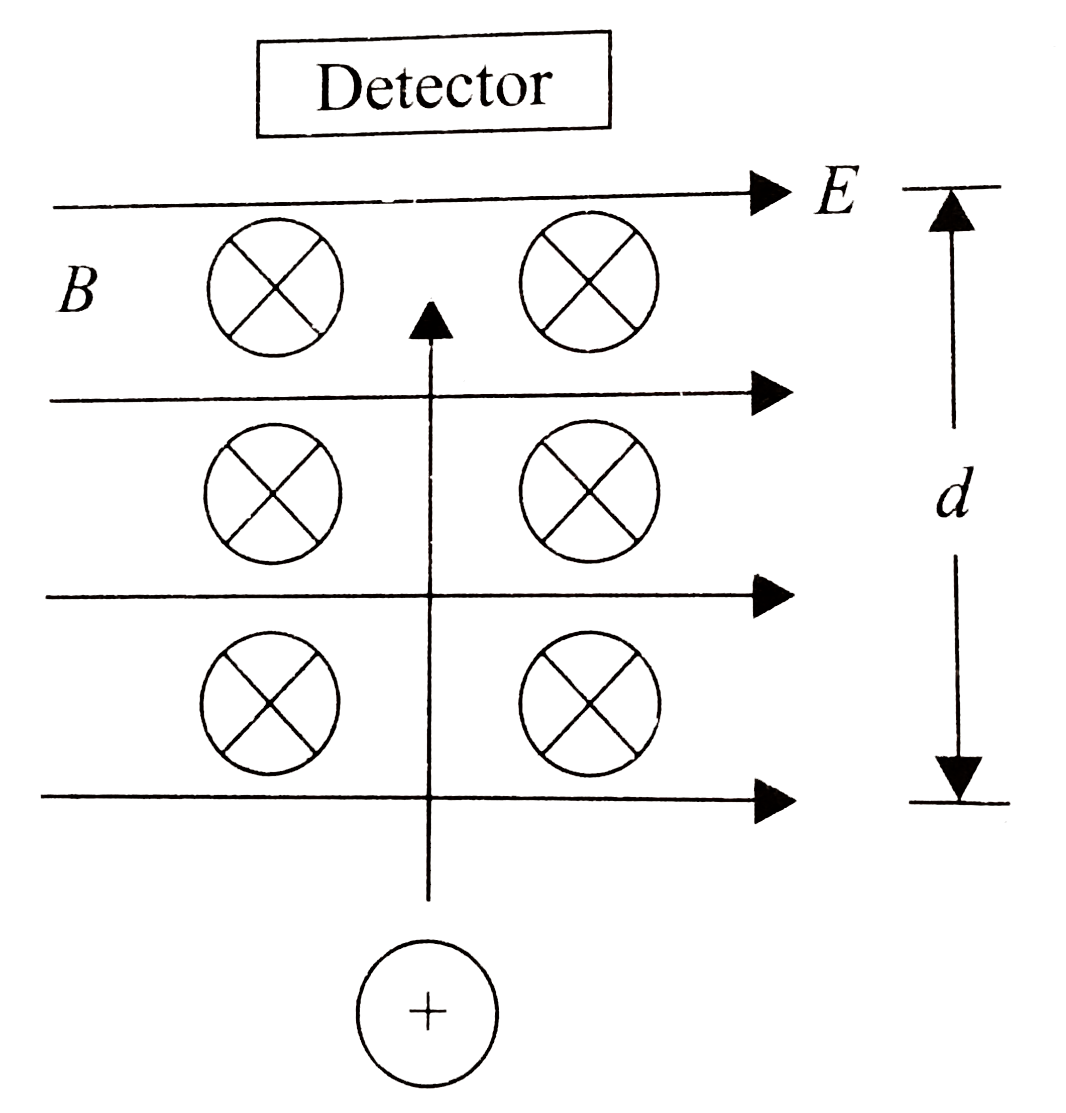A velocity selector, (a region of perpendicular electric and magnetic field)
Allows charged particles to pass straight when v=E/B
II. Deflects particles in a direction perpendicular to both v and B, whenu>E/B
III. Deflects particles in the direction of electric field whenv<E/B
IV. Deflects all particles in a direction perpendicular to both E and B.
I, III and IV
II, III and IV
I,II and III
I, II and IV
The correct Answer is:C
Similar Questions
A velocity filter uses the properties of electric and magnetic field to select particles that are moving with a specifice velocity. Charged particles with varying speeds are directed into the filter as shown. The filter consistt of an electric field E and a magnetic field B, each of constant magnitude, directed perpendicular to each other as shown, The charge particles will experience a force due to electric field given by F = qE. If positively charged particles are used, this force is towards right.

The moving particle will also experience a force due to magnetic field given by F=qvB. When forces due to the two fields are of equal magnitude, the net force on the particle will be zero, the particle will pass through centre with its path unaltered. The electric and magnetic fields can be adjusted t choose the specific velocity to be filtered. The efect of gravity can be neglected.
The electric and magnetic fields are adjusted to detect particles with positive charge q of certain speed v0. which of the following expressions is equal to this speed?View SolutionIn a certain region of space electric field E and magnetic field B are perpendicular to each other and an electron enters region perpendicular to the direction of B and E both and moves undeflected, then velocity of electron is
(a) |E||B| (b) E×B (c) |B||E| (d) E.BView Solution
Knowledge Check
- Question 1 - Select One
A charged particle entering a magnetic field from outside in a direction perpendicular to the field
Acan never complete one rotation inside the fieldBmay or may not complete one rotation in the field depending on it angle of entery into the fieldCwill always complete exactly half of a rotation before leaving the fieldDmay allow a helium path depending o its angle of entery into the field - Question 2 - Select One
A charged particle is projected perpendicular to the direction of uniform electric field. It's path in the region of the field will be
AellipticBlinearCcircularDparabolic - Question 3 - Select One
A n electrically charged particle enters into a uniform magnetic induction field in a direction perpendicular to the field with a velocity v then it travels
Aina straight line without accelerationBwith force in the direction of the fieldCin a circular path with a radius directly proportional toDin a circular path with a radius directly proportional to its velocity
In a certain region of space electric field E and magnetic field B are perpendicular ot each other and an electron enters region perpendicular to the direction of B and E both and moves undeflected, then velocity of electron is
View SolutionA velocity filter uses the properties of electric and magnetic field to select particles that are moving with a specifice velocity. Charged particles with varying speeds are directed into the filter as shown. The filter consistt of an electric field E and a magnetic field B, each of constant magnitude, directed perpendicular to each other as shown, The charge particles will experience a force due to electric field given by F = qE. If positively charged particles are used, this force is towards right.

The moving particle will also experience a force due to magnetic field given by F=qvB. When forces due to the two fields are of equal magnitude, the net force on the particle will be zero, the particle will pass through centre with its path unaltered. The electric and magnetic fields can be adjusted t choose the specific velocity to be filtered. The efect of gravity can be neglected.
The electric and magnetic fields are adjusted to detect particles with positive charge q of certain speed v0. which of the following expressions is equal to this speed?View SolutionIn a region of space with mutually perpendicular electric and magnetic fields, a charged particle moves without deflection, with a speed very much smaller tan the speed of light in vacuum (c). The energy densities due to the electric and magnetic fields are uE and uB respectively.
View SolutionThe following electric and magnetic fields produced by oscillating charged particles are
I perpendicular to each other.
II parallel to each other.
III both are perpendicular to the direction of propagation of the wave.
IV both are parallel to the direction of the waves.View SolutionA particle is moving towards east enters in a magnetic field directed towards north and deflected in vertically downward direction. The charged particle is
View Solution

